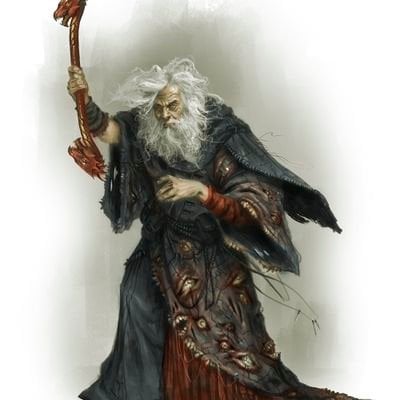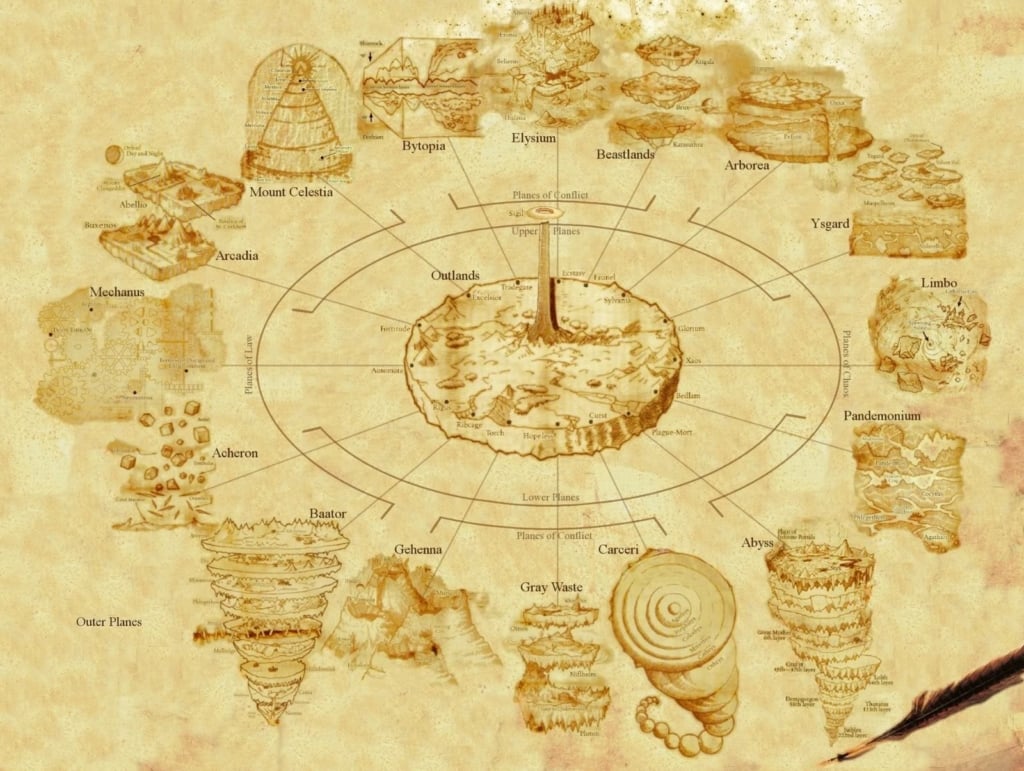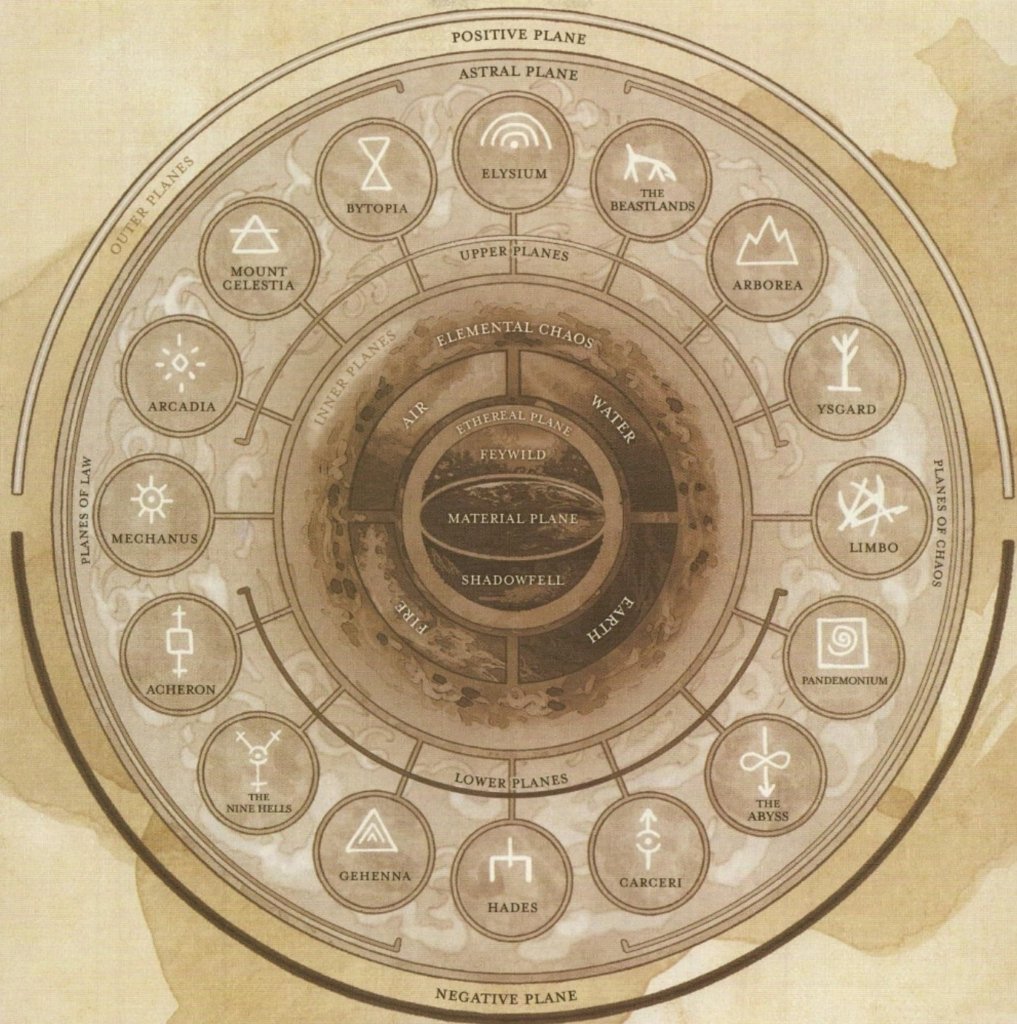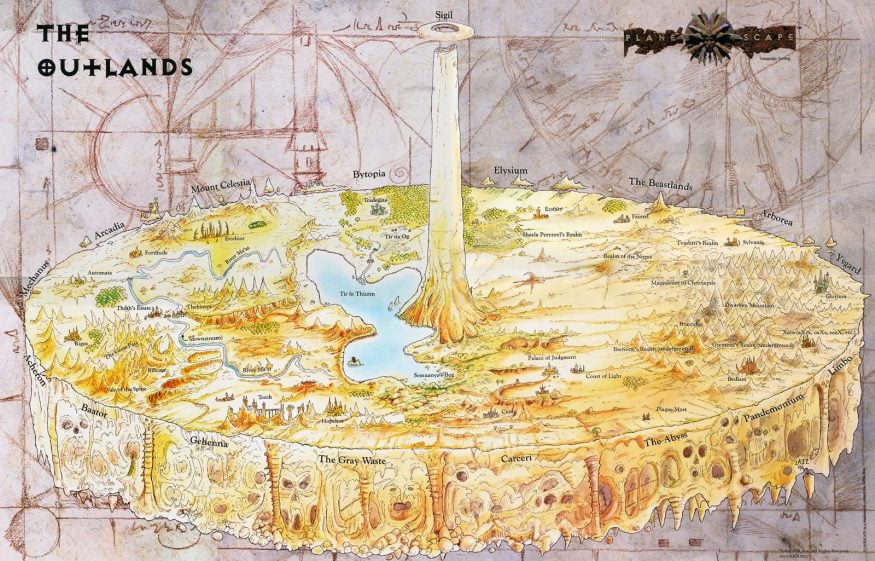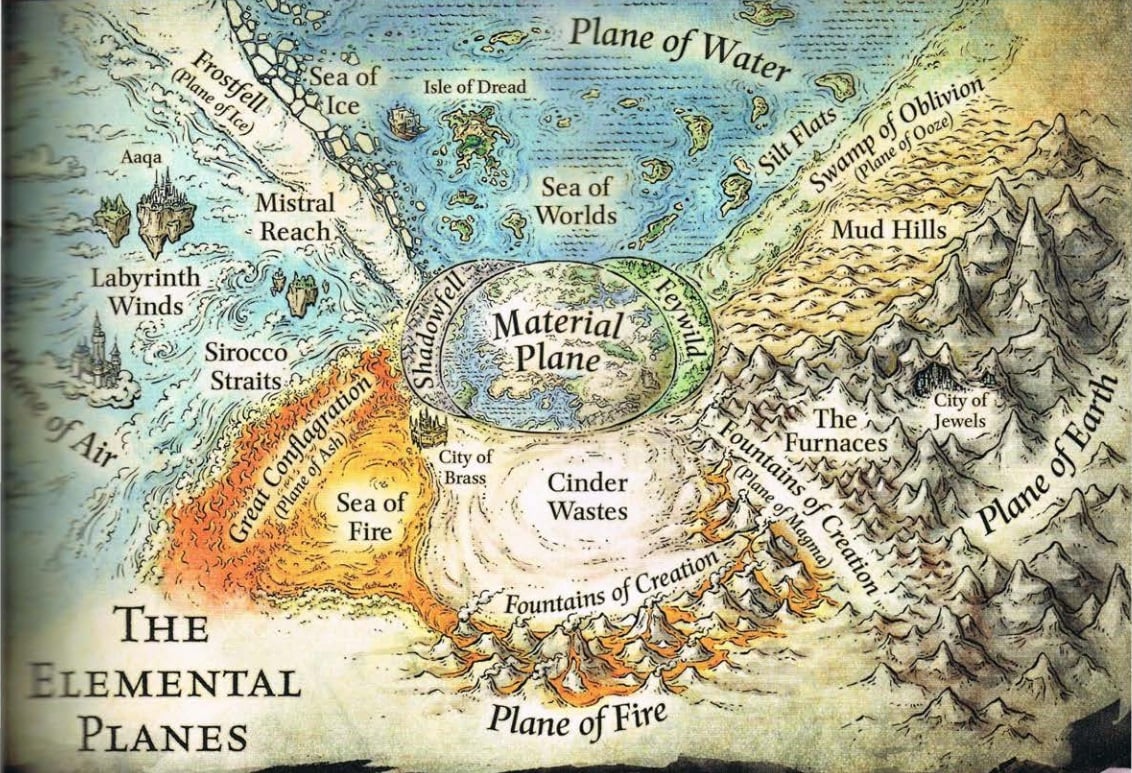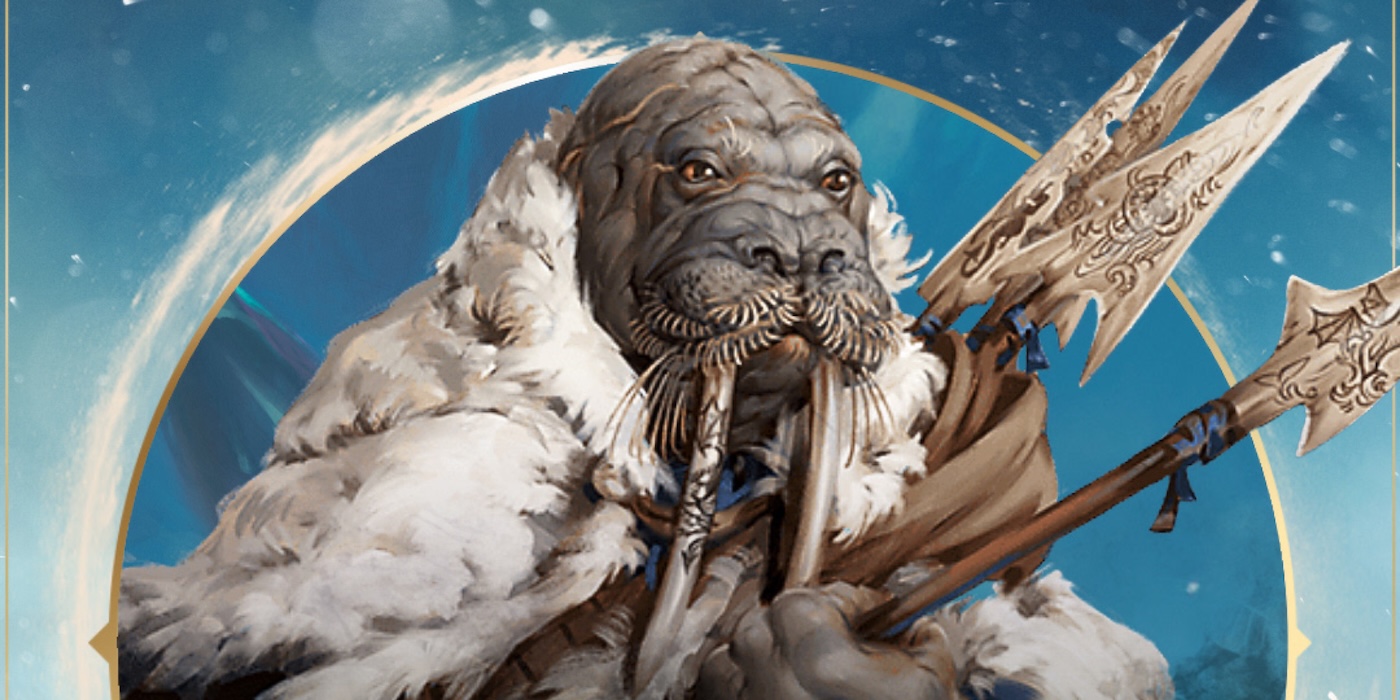D&D: An Adventurer’s Guide to the Multiverse
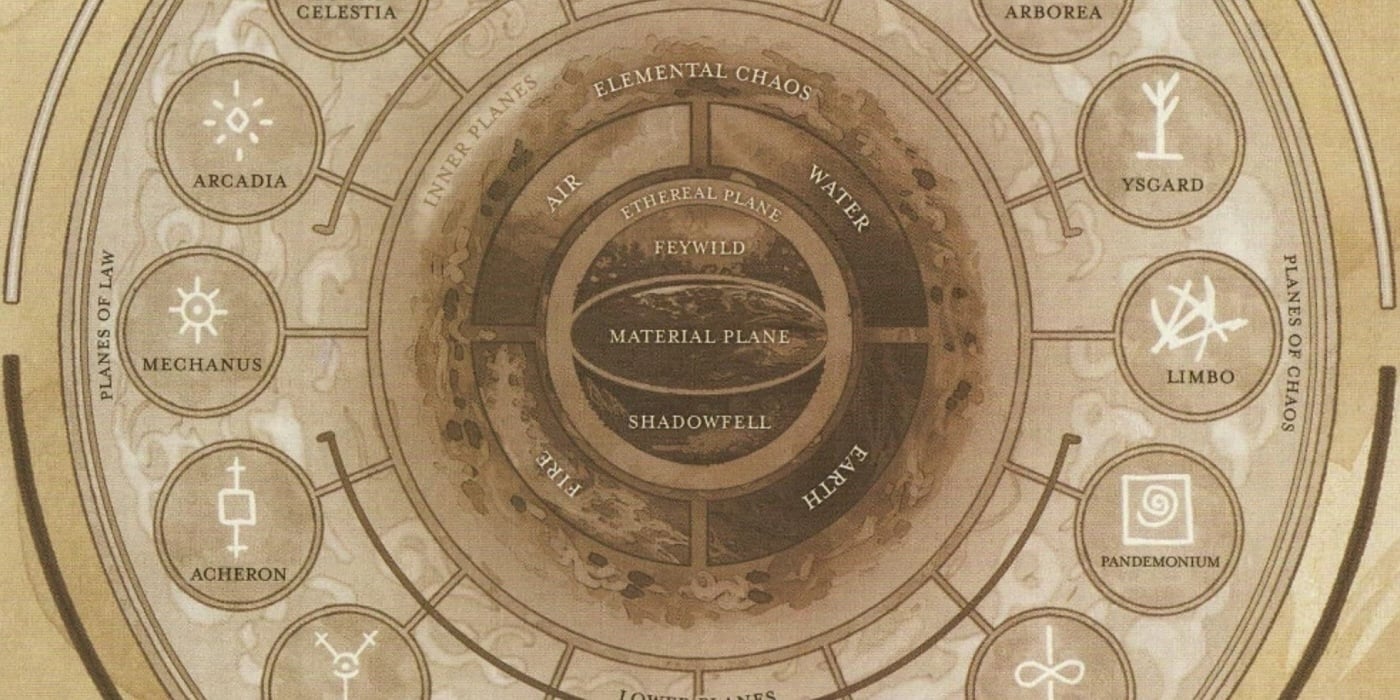
There are many ways of representing the cosmology of D&D. But one of the most popular is the “Great Wheel.” See how the multiverse turns.
The world is vast and full of mystery. And magic. Especially if we’re talking about Dungeons & Dragons’ many-layered world. It’s an ogre, onion, cake, or parfait of magical planes, alternate realities, and whole other worlds that exist in their own time and space.
You can catch a glimpse of this cosmology in various books. In Dungeon of the Mad Mage, you’ll find a reference to a strange place called Earth.
Sages have long marveled at how the multiverse might be constructed. Through the centuries the multiverse has been compared to a tree, a cloud, a central node orbited by others—but most sages can agree to work with a single theory: the Great Wheel.
The Great Wheel is a cosmological model that originated either on Oerth, Krynn, or Toril, depending on whom you ask. Whatever the origins, this model of cosmology describes the “geography” of the planes of existence.
It outlines a place in which the gods of many worlds and pantheons mingle. Where the beliefs of many faiths and peoples shape planes and afterlives. From the beastlands of Arvandor to the pristine order of the Clockwork Nirvana of Mechanus, there’s a place for almost everything on the Great Wheel.
In the latter years of the 15th Century on Toril, the Great Wheel came into popularity again, though it includes new planes discovered. Upstart realities like the Feywild and the Shadowfell didn’t exist before 4th Edition the Spellplague.
The basic structure is that the Great Wheel is a series of more-or-less concentric spheres. In the center of it all is the Prime Material plane, containing life as most mortals know it. Some say that the Prime Material plane exists in a crystal sphere full of phlogiston through which Spelljamming ships can journey. Others say it’s reality and that the other planes are separated by…dimensions.
Whatever the case may be, surrounding the Prime Material plane are the Ethereal and Astral planes. These both touch the Prime, though not each other.
Surrounding all of this is a circle of Outer planes, sometimes called the Planes of Power. These are 16 different planes arranged in a circle. Most are defined by an alignment. All surround a 17th neutral plane known as the Outlands.
Between them and the others are the Inner planes. These are the elemental planes of existence. Fire, Earth, Water, Air, and the Para-and-Quasi-elemental planes as well.
A recent revision to the theory postulates three new planes as well: the Elemental Chaos, which is said to be the farthest extent of the inner planes. It is a hostile, unknown plane where all the elemental forces come together.
Then there are the Feywild and Shadowfell. These are considered to be parallel realities to the Prime Material plane. They can be likened to extreme echoes of the worlds of the Prime. The Feywild is an exuberant reflection of life and vibrant colors and is the realm of the fae. While the Shadowfell is a dark mirror of the Prime it’s attached to. Decay, death, and desolation mark its reflection.
All of these are ripe for exploration with the right kind of magic. You’d be surprised to find they aren’t empty–most planes are home to thriving civilizations and strange creatures. Because as perhaps one of the greatest sages once said:
“Life…uh…finds a way.”
Happy adventuring!

